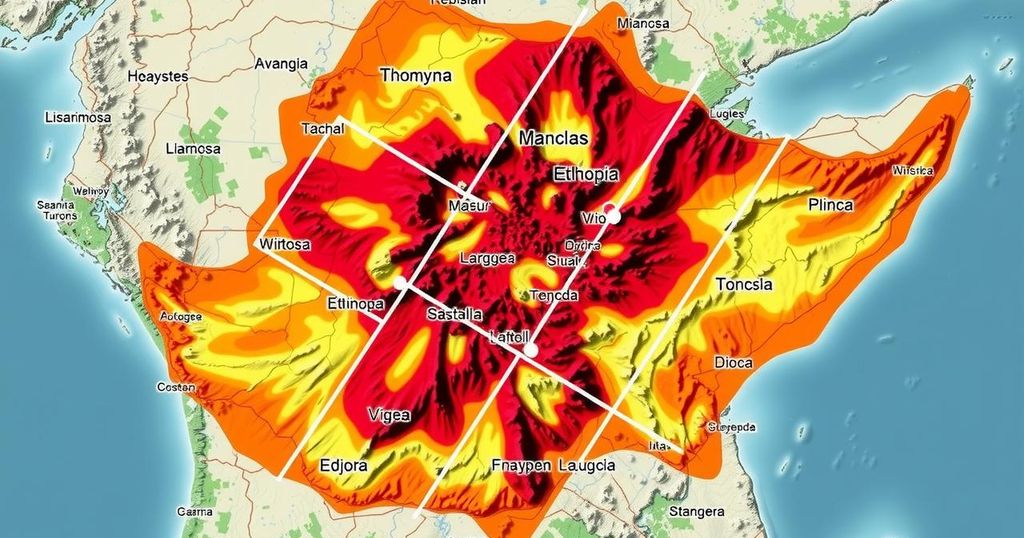Seismic Activity in Ethiopia: No Threat to Grand Ethiopian Renaissance Dam
Sudanese experts assure that the recent earthquakes in Ethiopia’s Afar region pose no threat to the Grand Ethiopian Renaissance Dam (GERD). The dam is over 500 kilometers from the epicenter of the latest quakes and has been designed to withstand seismic events. Concerns about low water levels and potential leaks are considered unlikely, emphasizing the need for scientific collaboration to address environmental issues in the Nile Basin.
Recent seismic activity in Ethiopia’s Afar region has led to the evacuation of over 80,000 residents; however, Sudanese geoscientists have reassured that the earthquakes pose no immediate threat to the Grand Ethiopian Renaissance Dam (GERD). With the latest quake measuring 8.1 and being over 500 kilometers from the dam, experts highlight that such infrastructure has been designed to withstand seismic events. While the tremors have raised concerns in Sudan regarding their potential effects on the dam and surrounding environment, the geological assessments indicate that the GRE is situated far from the active earthquake zone, thus ensuring its integrity. Amidst the low water levels observed in the reservoir, fears of a leak causing structural issues have been dismissed as unlikely, emphasizing the thorough preliminary studies conducted prior to the dam’s construction.
Abdelkarim El Amin, a Sudanese geoscientist, stated, “What is important is that the area where the GERD is built is far from the earthquake zone in eastern Ethiopia, and the epicenter of the latest quakes is about 500 kilometers from the Renaissance Dam.” He further explained that while any collapse of the GERD due to seismic activity is improbable, a worst-case scenario involving a partial failure could lead to severe flooding in Sudan and Egypt due to their low-lying geography along the Nile. El Amin underscored the need for a collaborative scientific effort to address environmental concerns related to the GERD and its implications for water resources in the Nile Basin.
In conclusion, despite the challenges posed by the recent earthquakes, experts maintain that the GERD remains structurally sound and resilient against seismic impacts. Comprehensive studies and monitoring underpin the safety features of the dam, ensuring that it can handle potential threats from natural disasters. Moreover, proactive engagement with scientific and governmental bodies is critical to mitigate risks and enhance the understanding of the GERD’s environmental effects.
The Grand Ethiopian Renaissance Dam (GERD) is a critical infrastructure project aimed at boosting Ethiopia’s energy generation capacity and managing water resources in the Nile Basin. Situated on the Blue Nile, the dam has raised regional concerns, especially among Sudan and Egypt, regarding its impact on their water supply. Amidst increasing seismic activity in Ethiopia’s Afar region, experts have been closely monitoring the safety of the GERD due to its potential implications for millions downstream. Understanding the geological dynamics and ensuring the dam’s integrity remain paramount to address the apprehensions of neighboring countries.
The recent earthquakes in Ethiopia do not currently pose a danger to the Grand Ethiopian Renaissance Dam, according to Sudanese geoscientists. The dam is located significantly away from the earthquake zone and is engineered to resist seismic events. Proactive scientific collaboration is recommended to assess environmental impacts and ensure comprehensive management of the Nile Basin’s water resources.
Original Source: www.dabangasudan.org




Post Comment